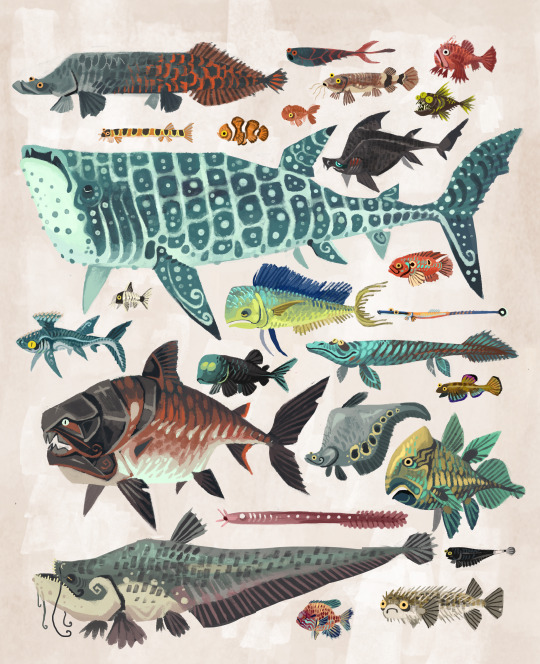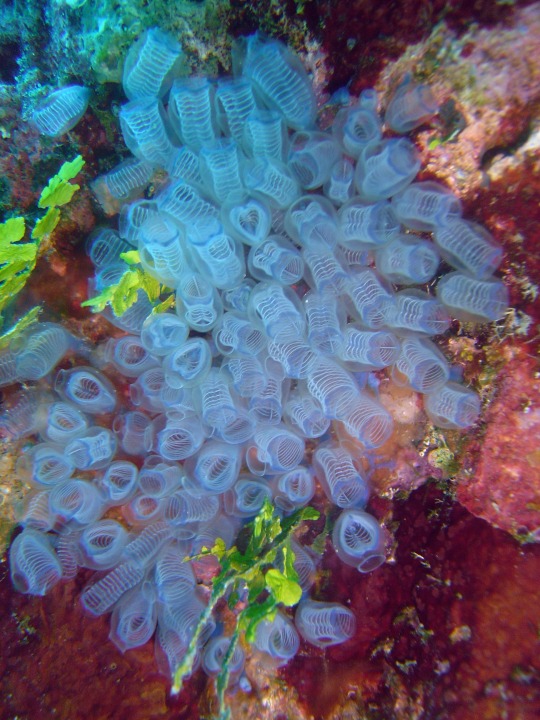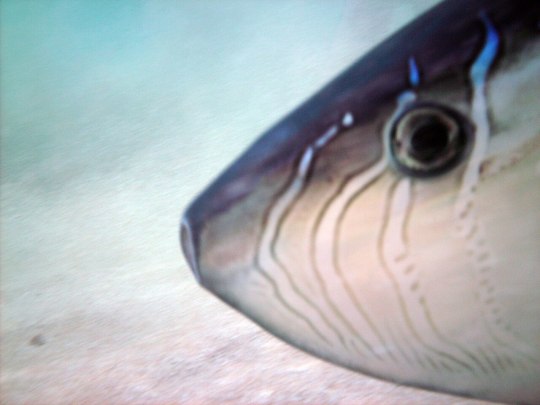#marine biology
Explore tagged Tumblr posts
Text

plenty of sea in the fish or some shit like that idfk
#art#digital art#artists on tumblr#illustration#fish#marine biology#ichthyofauna#animals#marine#other than the radgill (fuck you noon) there everything existed or exists irl teehe
40K notes
·
View notes
Text

Did you ever wish you had a built-in blanket? Well, this cephalopod doesn’t need to wish… Meet the Indo-Pacific violet blanket octopus (Tremoctopus gracilis)! While males are tiny, rarely growing more than a few centimeters long, females are more than 10,000 times that size—reaching lengths of up to 6 ft (2 m)! Females also sport massive “blankets,” which are actually webs of skin connecting their dorsal arms. When threatened, they can drop these appendages, distracting predators as they make their escape.
Photo: Mike Bartick, CC BY-NC 4.0, iNaturalist
809 notes
·
View notes
Text
Holy frick I literally just saw green and pink and immediately assumed this was art of Lizzie and Joel as seals

silly seals from outer space
#seal#artists on tumblr#digital art#digital illustration#illustration#drawing#art#artwork#cute#kawaii#animals#animal art#illust#soft art#nature#marine biology#< prev tags#jizzie
37K notes
·
View notes
Text


learning a new meduim? Try fishies…
33K notes
·
View notes
Text










Nautilus expedition live streams (+ their commentary) | 2024
#ev nautilus#nautilus live#marine biology#deep sea#fishblr#marine life#evnautilus#sea creatures#marine animals#ocean animals#nautilus#moray eel#dumbo octopus#chaunacops#works
36K notes
·
View notes
Text

#eels#eel#marine biology#funny#humor#lmao#lol#meme#memes#twitter#tweets#tweet#mostly-funnytwittertweets
46K notes
·
View notes
Text










65K notes
·
View notes
Text

My, my… what big teeth you have! Meet the Pacific stargazer (Astroscopus zephyreus). Found in coastal waters from California to Peru, this fish is an ambush hunter. Spending most of its life buried beneath the sand, the stargazer’s upturned face is an adaptation that allows it to see even when most of its body is concealed. What’s more? This species is capable of stunning prey with electrical shocks of up to 50 volts! Photo: alboertoalcala, CC BY 4.0 iNaturalist
862 notes
·
View notes
Note
I did a lot of research about these guys last semester, specifically about Southern Resident Killer Whales (SRKWs) and their weird feeding behaviors. Many SRKWs have a feeding pattern that only includes fish as a prey source. However, they will STILL fuck seals up in this way, and just not eat them afterwards. No one is 100% sure why they do this but the possible reasons include it just being part of their culture and a form of play behavior, as well as possibly representing a form of fucked up misplaced mothering behavior towards the seals????
Anyway orcas are cool as fuck and need more research.
Wait, orcas murder things by yeeting them up into the air? What part of that kills them?
the part where a 6-ton animal cannonballs into them at 30 mph and reduces all of their internal organs to a fine paté
19K notes
·
View notes
Text

a plaice placed politely atop a crab
#eddie in the ocean#eddies aquatic adventure#<- went to the aquariuuum :)#fishblr#marine biology#the fish sat there for a good minute or so
158 notes
·
View notes
Text

A colony of tunicates, hemichordates between vertebrates and invertebrates. Clavelina moluccensis. Mariana Islands, Guam.
96 notes
·
View notes
Text

gamer
(source: squidpastry on iNaturalist)
15K notes
·
View notes
Text

new sticker in the shop!
5% of all profits this month will be donated to ‘Āina Momona, a community organization dedicated to achieving environmental sustainability through restoring social justice and Hawaiian sovereignty! We had a successful donation for pride month and wanted to keep up a rotating donation every month for different causes :)
#my art#queer artist#art#marine biology#monk seal#moray eel#eel#humuhumunukunukuapua'a#reef triggerfish#hawaiʻi#harlequin shrimp#nudibranch
66 notes
·
View notes
Text
Today’s sea slug is Thuridilla gracilis, commonly known as the Slender Sap Sucker.

Image source: https://www.inaturalist.org/observations/107704590
48 notes
·
View notes
Note
have you ever done any fish from the family Molidae? If not, I volunteer Ranzania laevis
Today's fish of the day is the slender sunfish!

The slender sunfish, known by the scientific name Ranzania laevis, is the only remaining sunfish in the Ranzania genus. Found worldwide around the tropical and subtropical areas, form a range of 71°North to 55°South. Found from a depth of 1-140 meters, these fish spend all of their time on the epipelagic zone. Despite this, these fish are considered incredibly elusive, finding ways to dodge humans as often as they can, as such most research on these fish comes from stranded fish along the Australian coast. In particular across multiple strandings along the Southern Australian coast. Of which only very few specimens are able to be returned to the ocean from.

Unlike their close relatives, the mola sunfishes, the slender sunfish is incredibly small. Growing only 100cm in length at maximum, as opposed to their cousins, which can grow upwards of 5 meters. This however is to the slender sunfish's benefit, as they are the only fast moving marine sunfish. The other remaining 5 sunfish species are all rather slow moving, consuming only plankton and jellyfish, the slender sunfish however has chosen a far more difficult pathway. Instead consuming squid, which are known for their speed and agility. I can find no information about known predators of the slender sunfish, although their skin is far thinner than that of their relatives, and thus it's likely they're predated on by marine mammals and large sharks.

There is little to no info about the reproduction of the slender sunfish, and no information about lifecycle or lifespan. However, if we assume that the slender sunfish breeds similarly to the common ocean sunfish (Mola mola) then we can assume that they release eggs into the water to be externally fertilized, and become plankton, floating until they mature and hatch into fry. As the slender sunfish ages, it will begin to lose the caudal tail it is born with, slowly fusing into a clavas, which helps them move faster in the water. Marine sunfish are not known for their speed, and for years it was thought that Mola's had no ability to move of their own accord, but were rather being propelled by the water. This misinformation goes hand in hand with the idea that when these sunfish bask at the surface of the water, they are stuck. However, this behavior is done to entice cleanerfish, and seabirds, such that they may remove and eat the skin parasites collected by the sunfish over time. Molas can swim with their anal and dorsal fins, using the pectoral fins as stabilizers. These fish are even able to control the angle and force it produces well swimming! Similar to how bird wings work! Sunfish may also steer themselves with strong jets of water shot from the mouth. Which is possibly why the mouth is fused open permanently by the shape of their hardened beak.

That's the slender sunfish, everybody! I hope you enjoyed learning about them!
#fish#fish of the day#fishblr#fishposting#aquatic biology#marine biology#animal facts#animal#animals#fishes#informative#education#aquatic#aquatic life#nature#ocean#mola#molidae#sunfish#sun fish#slender sunfish
43 notes
·
View notes